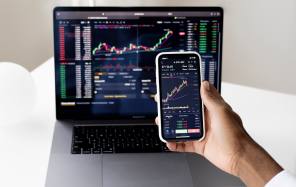
Article 4 / 4
The Guide: Precious metalsPrice fluctuations leave precious metal outlook finely balanced

As investments, gold and precious metals tend to come into their own during times of uncertainty, whether that is geopolitical or economic.
The world is certainly not short of potential risks and shocks at the moment, with tensions between the US and North Korea, various elections still to take place in Europe and lingering concerns over global growth as central banks in developed economies toy with raising interest rates.
As John Mulligan, head of member and market relations at the World Gold Council, points out: "The term safe haven is often used to describe a number of gold’s benefits as an asset, reflecting both its role as portfolio insurance and its ability to outperform during times of extreme market duress.
"Gold is not a universal panacea but, as a high-quality liquid asset it can readily be used when other assets are under pressure and investors have few options to turn to, to protect their capital."
He notes while all precious metals may offer an element of risk diversification to a portfolio, gold is far more consistent and reliable in this regard.
"The other metals do not always offer investors the same level of security because they are generally far too volatile, with supply more concentrated in specific regions and demand often rooted in a particular sector, making them more sensitive to industrial consumption cycles. Furthermore, they do not have gold’s intrinsic monetary aspect," he explains.
Gold has risen 5 per cent for sterling investors so far in 2017 and added more than twice that in US dollar terms, according to Adrian Ash research director at BullionVault.
He says the metal is likely to extend these gains if bond yields trade further below inflation.
"The Fed's three hikes to US interest rates since the end of 2015 have so far lagged the upturn in inflation. As the real returns to cash have grown more negative, non-yielding gold has gained in price, finding a floor at $1,045 on the 2015 rate-rise and recovering $200 per ounce since then as investors reallocate to precious metals as hard-money assets," Mr Ash says.
Turning to the rest of the precious metals, including silver, platinum and palladium, he suggests they also share something of gold's rarity, giving them strong appeal during periods of rising inflation.
"But less than 10 per cent of annual global gold demand comes from industry, compared to 55 per cent for silver and 65 per cent for platinum. That makes silver and platinum more useful in normal economic conditions but increases their vulnerability to slower growth or a credit crisis," he adds.
The gold price may have been a poor performer in the fourth quarter of 2016 before recovering at the start of this year, leaving investors wondering where it is likely to go from here.
Jamie Horvat, manager of the M&G Global Basics fund, says he is monitoring the activity of the gold miners closely.
"In the first half of this decade, gold miners were forced to cut costs and pay down debt following a sharp fall in the gold price. Having restructured their businesses, management may be tempted to make acquisitions – possibly overpaying – just when they need to increase maintenance spending," he cautions.
“Elsewhere in the precious metals space, we are watching the platinum price for any weakness. With the sale of diesel cars under pressure and jewellery demand weaker on the back of anti-corruption measures in China, this is a possibility."
eleanor.duncan@ft.com



